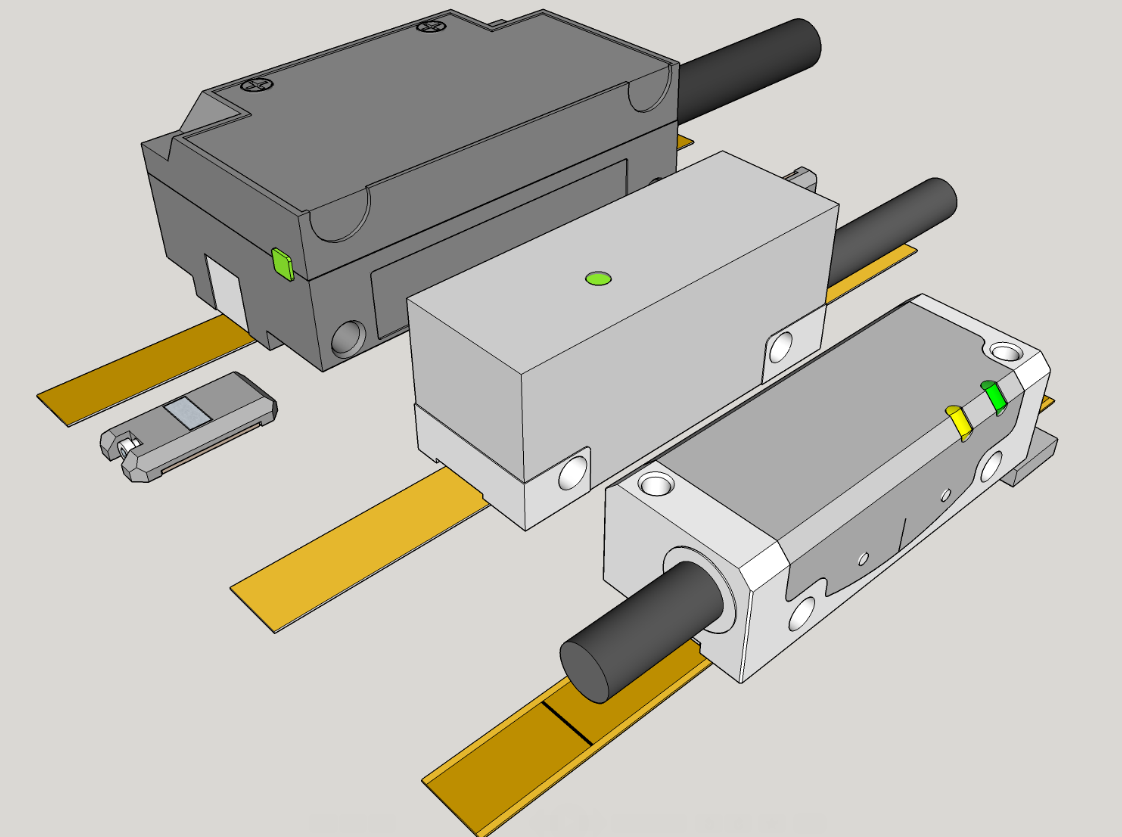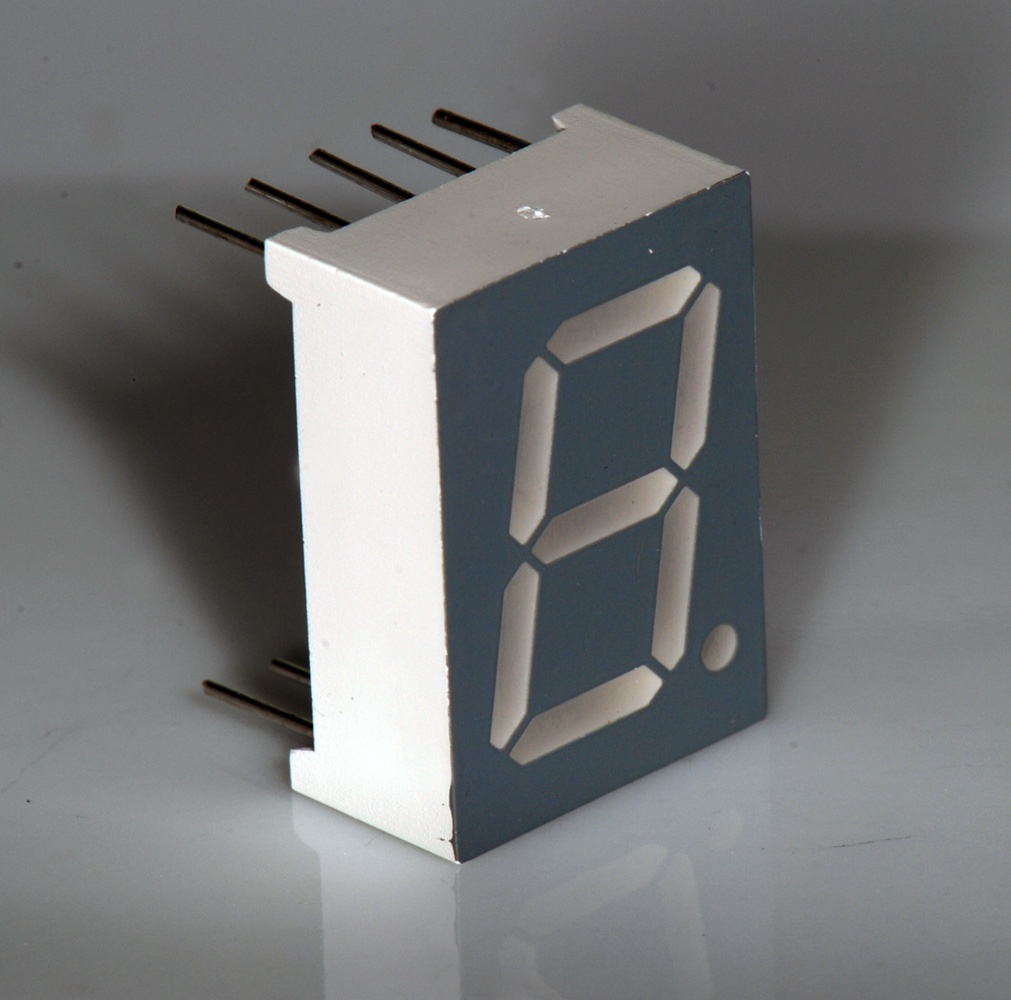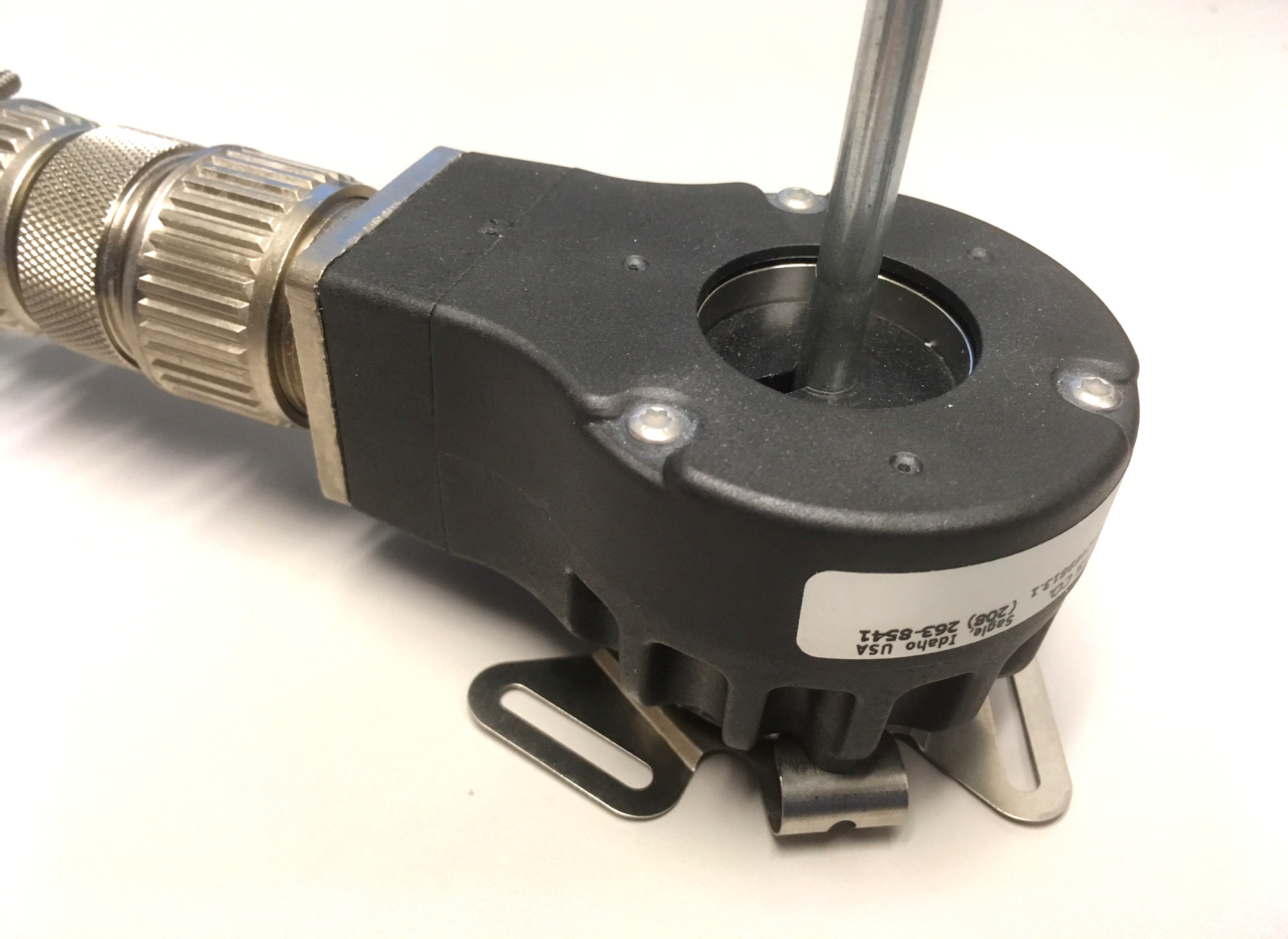|
Digital Read Out
A digital readout (DRO) is a numeric display, usually with an integrated keyboard and some means of numeric representation. Its integral computer reads signals generated by linear encoders or (less frequently) rotary encoders installed to track machine axes, using these measures to keep track of and display to a machine operator the workpiece position (e.g., milling machines), or tool position (lathes, grinders, etc) in space. In machine-shop terminology, the complete ''digital read-out'' system (consisting of a computer, axis-position encoders, and a numeric display) is referred to by the acronym DRO. Such a system is commonly fitted to machines in today's shops, especially for metal working — lathes, cylindrical grinders, milling machines, surface grinders, boring mills and other machine tools — to allow the operator to work faster and with greater accuracy. Use of DROs is not limited to manually operated machines. CNC machines can usually be switched to manual operation, ... [...More Info...] [...Related Items...] OR: [Wikipedia] [Google] [Baidu] |
Linear Encoder
A linear encoder is a sensor, transducer or readhead paired with a scale that encodes position. The sensor reads the scale in order to convert the encoded position into an analog or digital signal, which can then be decoded into position by a digital readout (DRO) or motion controller. The encoder can be either ''incremental'' or ''absolute.'' In an incremental system, position is determined by motion over time; in contrast, in an absolute system, motion is determined by position over time. Linear encoder technologies include optical, magnetic, inductive, capacitive and eddy current. Optical technologies include shadow, self imaging and interferometric. Linear encoders are used in metrology instruments, motion systems, inkjet printers and high precision machining tools ranging from digital calipers and coordinate measuring machines to stages, CNC mills, manufacturing gantry tables and semiconductor steppers. Physical principle Linear encoders are transducers that exploit ma ... [...More Info...] [...Related Items...] OR: [Wikipedia] [Google] [Baidu] |
Rotary Encoder
A rotary encoder, also called a shaft encoder, is an electro-mechanical device that converts the angle, angular position or motion of a shaft or axle to Analog signal, analog or Digital signal, digital output signals. There are two main types of rotary encoder: absolute and incremental. The output of an absolute encoder indicates the current shaft position, making it an transducer, angle transducer. The output of an incremental encoder provides information about the ''motion'' of the shaft, which typically is processed elsewhere into information such as position, speed and distance. Rotary encoders are used in a wide range of applications that require monitoring or control, or both, of mechanical systems, including industrial controls, robotics, photographic lenses, computer input devices such as optomechanical computer mouse, mice and trackballs, controlled stress rheometers, and rotating radar platforms. Technologies * Mechanical: Also known as conductive encoders. A serie ... [...More Info...] [...Related Items...] OR: [Wikipedia] [Google] [Baidu] |
Seven-segment Display
A seven-segment display is a display device for Arabic numerals, less complex than a device that can show more characters such as dot matrix displays. Seven-segment displays are widely used in digital clocks, electronic meters, basic calculators, and other electronic devices that display numerical information. History Seven-segment representation of figures can be found in patents as early as 1903 (in ), when Carl Kinsley invented a method of telegraphically transmitting letters and numbers and having them printed on tape in a segmented format. In 1908, F. W. Wood invented an 8-segment display, which displayed the number 4 using a diagonal bar (). In 1910, a seven-segment display illuminated by incandescent bulbs was used on a power-plant boiler room signal panel. They were also used to show the dialed telephone number to operators during the transition from manual to automatic telephone dialing. They did not achieve widespread use until the advent of light-emitting diode, LEDs in ... [...More Info...] [...Related Items...] OR: [Wikipedia] [Google] [Baidu] |
Rotary Table
A rotary table is a precision work positioning device used in metalworking. It enables the operator to drill or cut work at exact intervals around a fixed (usually horizontal or vertical) axis. Some rotary tables allow the use of index plates for indexing operations, and some can also be fitted with dividing plates that enable regular work positioning at divisions for which indexing plates are not available. A rotary fixture used in this fashion is more appropriately called a dividing head ( indexing head). Construction The table shown is a manually operated type. Powered tables under the control of CNC machines are now available, and provide a fourth axis to CNC milling machines. Rotary tables are made with a solid base, which has provision for clamping onto another table or fixture. The actual table is a precision-machined disc to which the work piece is clamped ( T slots are generally provided for this purpose). This disc can rotate freely, for indexing, or under the con ... [...More Info...] [...Related Items...] OR: [Wikipedia] [Google] [Baidu] |
Weighing Scale
A scale or balance is a device used to measure weight or mass. These are also known as mass scales, weight scales, mass balances, massometers, and weight balances. The traditional scale consists of two plates or bowls suspended at equal distances from a fulcrum. One plate holds an object of unknown mass (or weight), while objects of known mass or weight, called '' weights'', are added to the other plate until mechanical equilibrium is achieved and the plates level off, which happens when the masses on the two plates are equal. The perfect scale rests at neutral. A spring scale will make use of a spring of known stiffness to determine mass (or weight). Suspending a certain mass will extend the spring by a certain amount depending on the spring's stiffness (or spring constant). The heavier the object, the more the spring stretches, as described in Hooke's law. Other types of scales making use of different physical principles also exist. Some scales can be calibrate ... [...More Info...] [...Related Items...] OR: [Wikipedia] [Google] [Baidu] |
Phototransistor
A photodiode is a semiconductor diode sensitive to photon radiation, such as visible light, infrared or ultraviolet radiation, X-rays and gamma rays. It produces an electrical current when it absorbs photons. This can be used for detection and measurement applications, or for the generation of electrical power in solar cells. Photodiodes are used in a wide range of applications throughout the electromagnetic spectrum from visible light photocells to gamma ray spectrometers. Principle of operation A photodiode is a PIN structure or p–n junction. When a photon of sufficient energy strikes the diode, it creates an electron–hole pair. This mechanism is also known as the inner photoelectric effect. If the absorption occurs in the junction's depletion region, or one diffusion length away from it, these carriers are swept from the junction by the built-in electric field of the depletion region. Thus holes move toward the anode, and electrons toward the cathode, and a photocurrent ... [...More Info...] [...Related Items...] OR: [Wikipedia] [Google] [Baidu] |
Incremental Encoder
An incremental encoder is a linear or rotary electromechanical device that has two output signals, ''A'' and ''B'', which issue pulses when the device is moved. Together, the ''A'' and ''B'' signals indicate both the occurrence of and direction of movement. Many incremental encoders have an additional output signal, typically designated ''index'' or ''Z'', which indicates the encoder is located at a particular reference position. Also, some encoders provide a status output (typically designated ''alarm'') that indicates internal fault conditions such as a bearing (mechanical), bearing failure or sensor malfunction. Unlike an absolute encoder, an incremental encoder does not indicate absolute position; it only reports changes in position and the corresponding direction of movement for each change. Consequently, to determine absolute position at any particular moment, it is necessary to send the encoder signals to an ''Incremental encoder#Incremental encoder interface, incremental ... [...More Info...] [...Related Items...] OR: [Wikipedia] [Google] [Baidu] |
Hall Effect Sensor
A Hall effect sensor (also known as a Hall sensor or Hall probe) is any sensor incorporating one or more Hall elements, each of which produces a voltage proportional to one axial component of the Magnetic field#The B-field, magnetic field vector using the Hall effect (named for physicist Edwin Hall). Hall sensors are used for proximity sensing, positioning (navigation), positioning, Speed limit enforcement, speed detection, and current sensing applications and are common in industrial and consumer applications. Hundreds of millions of Hall sensor integrated circuits (ICs) are sold each year by about 50 manufacturers, with the global market around a billion United States dollar, dollars. Principles In a Hall sensor, a fixed DC current, DC bias current is applied along one axis across a thin strip of metal called the Hall element transducer. Sensing electrodes on opposite sides of the Hall element along ''another'' axis measure the difference in electric potential (voltage) ac ... [...More Info...] [...Related Items...] OR: [Wikipedia] [Google] [Baidu] |
Vertical Quill Dro
Vertical is a geometric term of location which may refer to: * Vertical direction, the direction aligned with the direction of the force of gravity, up or down * Vertical (angles), a pair of angles opposite each other, formed by two intersecting straight lines that form an "X" * Vertical (music), a musical interval where the two notes sound simultaneously * "Vertical", a type of wine tasting in which different vintages of the same wine type from the same winery are tasted * Vertical Aerospace, stylised as "Vertical", British aerospace manufacturer * Vertical kilometer, a discipline of skyrunning * Vertical market, a market in which vendors offer goods and services specific to an industry * Vertical integration, a management term describing a style of ownership and control Media * ''Vertical'' (film), a 1967 Soviet movie starring Vladimir Vysotsky * "Vertical" (''Sledge Hammer!''), 1987 television episode * ''Vertical'' (novel), 2010 novel by Rex Pickett * Vertical (film compa ... [...More Info...] [...Related Items...] OR: [Wikipedia] [Google] [Baidu] |




